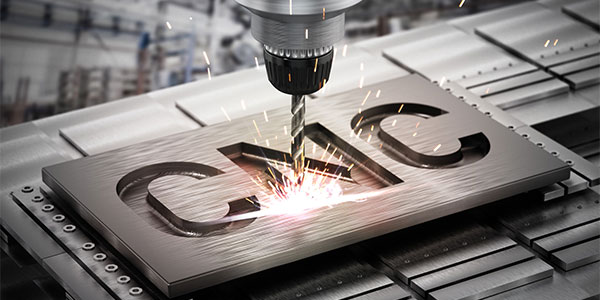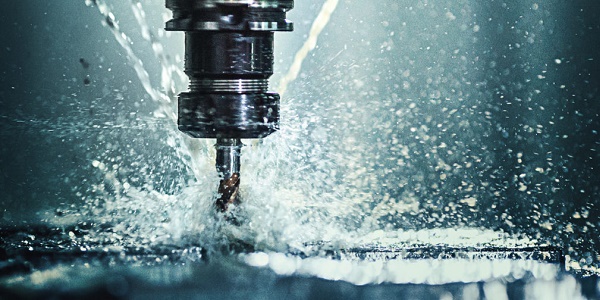CNC Machining
CNC machining is an integral part of injection molding processes. We have relied on it to produce parts and prototypes for more than 3 decades and have acquired vast experience in all its benefits and challenges. When you choose LXL Molding as your preferred CNC machining service provider, we harness this knowledge to deliver the requirements of your project to perfection.

Advantages of LXL Molding's CNC Machining
Our CNC machining processes are among the best in the market. It is through such professionalism that we have remained a force to reckon with in the industry for almost 30 years now. We are forever evolving with the times and combining our experience with the current manufacturing technologies. The following are some advantages of our CNC Machining.
- Rapid Turnaround: We get started on orders immediately when they come in. Thanks to the latest technologies and state-of-the-art machines, we can produce top-of-the-range products and parts within the first 24hrs once we get the client’s approval.
- Custom Finishes: We take into consideration all the client’s specifications and produce parts that match what they want in exact detail. Whether the parts are being crafted on solid metal or plastic, there is no room for error. Our replicas are flawless.
- Scalability: When it comes to scalability, we are the experts. We have the capabilities to scale up any type of part to any size you want without changing the quality or the functioning in any way. All we need are the instructions, and we deliver.
- Material Selection: We use the best raw materials that we can find. This ensures that every product that rolls out of our assembly line is of the highest quality with increased durability and strength. Certified raw materials are the backbone of our manufacturing processes.
About CNC Machining
What is CNC Machining
The term CNC, in automated manufacturing and industrial applications, stands for Computer Numerical Control. CNC Machining is, therefore, a type of manufacturing that makes use of computerized controls and tools to get rid of layers of material from an already existing stock piece (the blank) to create an entirely new custom-designed component.
CNC machining is a versatile process that can work on any type of material from metals, woods, plastics bits, glass, foam, and other composites. For these reasons, it is one of the most widely used applications in the manufacturing space, including FOW Mould. One of the industries that make use of CNC machining is telecommunications, as it requires higher tolerances compared to other industries.
CNC machining involves four main stages as briefly detailed below:
- Model Design: This is the stock model upon which products will be designed. It is usually created by CAD software on a computer, and the instructions are fed into the manufacturing line.
- Conversion: This is where the computer-aided design that has been fed into the machine is extracted from the generated code to create the custom-designed part in question.
- Machine Preparation: Before the CNC program is run, the machine has to be prepared and made ready for operation. This involves fixing the necessary parts, adding spindles, the drill bits, and end mills, among other accessories.
- Execution: Once every part is in place, the machine can execute the program, making use of all the tools to produce a product that is in line with the instructions being fed into it.
CNC Machining Materials Options
The quality of steel is very important in determining the quality of the end product; this is why we source our steel from famous brands like ASSAB, LKM, and Gröditz. Once the steel arrives at our plant, we analyze it further with a spectrograph to make sure that it is up to our standards. This ensures that our mold quality and lifespan are among the best.
Typles of CNC Machining
CNC Machining is a versatile manufacturing process that is widely used in almost all industrial complexes. There are mainly three main types of CNC Machining:
- CNC Drilling: Drilling is the process where holes are made into a hard material in an accurate and precise shape. Most times, these holes are cylindrical, and they are made when the CNC machine feeds a rotating drill bit perpendicularly into a workpieces’ surface. This produced identical holes that are vertically aligned with equal diameters depending on the size of the drill bit. Processes that make use of CNC drilling are clue counter boxing, reaming, countersinking, and tapping.
- CNC Milling: In this stage, the custom CNC machine uses rotating multipoint cutting tools to get rid of materials from a workpiece. The material is fed into the machine, and the cutting tools are put to work, moving in the same direction as the workpiece. The operations that make use of this process include face milling and peripheral milling.
- CNC Turning: This is the process where a CNC machine employs the use of single-point cutting tools to get rid of materials from a rotating workpiece. The machine feeds the cutting tool in a linear motion manner along the workpiece’s rotating surface. Unwanted material is removed until the desired diameter is attained. This process is used to make cylindrical components like threads, tapers, and slots.
How CNC Machining Types Affect the Quality of Injection Mold Making
The quality of injection molding is affected by the different CNC Machining types. Understanding how each of the types affects the quality will help you in determining the right one to go with for your project.
- CNC Milling Machine: The speed of the machine and the size of the tools will affect the quality of the injection mold. Setting up the machines requires lots of caution and precision to reduce errors.
- High-Speed Milling Machine: High-speed machines make it easier for rapid production, but they can also be a source of problems if they are not calibrated in the right way. Speed only adds value if it is used in the right way.
- Side Drilling Machines: Accuracy is important in this method. The bits used in drilling holes on the sides of workpieces have to be sharp and accurate, cutting the needed holes as specified.
- CNC Engraving Machines: The programming that goes into this role will determine the end result. The more accurate the programming, the more efficient the tools.
- CNC Lathe: Operating a CNC Lathe machine is more complicated than many people would like to imagine. One has to be certified and experienced for the best results to be attained.
- Boring Machine: A boring machine depends on the quality of the drill bits. They have to be strong and durable. Accuracy is important as the weight comes to making holes as they have to accommodate other parts later on.
CNC Machining For Injection Mold Making Process
CNC Machining follows certain protocols in its operations. These protocols have been put in place to make sure that the machines work as designed and the right precautions are put into consideration by the operator. These processes include the following:
- CAD Model Design for Injection Molds
These are the mold designs that are generated through CAD software on the computer. They are a virtual representation of the final product, and they contain the code and coordinate the product and how the CNC machine will be able to decipher and execute. - CAD File Conversion
Once the CAD program has done its part and created the file that will be used to model the product, it is fed into the CNC machine, where the file is converted into a readable format by the machine. This conversion is vital as it is the only way that a machine will be able to know what it is supposed to make. - CNC Machine Setup
The CNC machine has to be set up for operations. This involves adding all the accessories needed for that particular operation in question. Parts like drill bits are added, and the worksheets are fed into the machine before the program is run. The machine is given a sweeping inspection to ensure that all the parts are in place. - CNC Machining Operation
Once everything is in place, the machine can now be declared ready for operation. It takes a qualified technician to run the entire thing. When all the drill bits and the worksheet are ready, simply feed the material into the machine and execute the program and wait for the final product at the end.
CNC Machining Applications
There are many ways that CNC Machining can be appalled in the commercial and domestic space. Some of the notable applications include the following.
- Injection Mold Making: This is the use of an insert to make a specific shape of an object by injecting molten material into it while it’s still hot. Once it solidifies, it leaves behind the final product. Injection molding is used in making automotive parts, storage containers, furniture, mechanical parts for machines, among many other things.
- Rapid prototyping: Prototyping is the process where experimental models are made to address a certain problem. Usually, this prototype CNC machining requires a lot of time, but thanks to advanced technologies and machines, rapid prototyping is now possible. The process can be applied in creating car parts and home appliance components in huge numbers.
- Surface Finishing: Appearances are everything, and CNC machining can be used to convert a flat-looking surface into a beautiful finish. This comes in handy when dealing with automobiles, home appliances, among many other daily use products.


